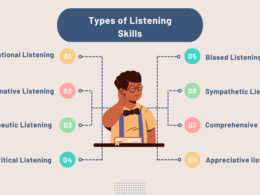With the adoption of the Salamanca Statement in 1994 (UNESCO) a large number of developing countries have reformulated their policies to promote the inclusion of Child with Special Needs (CWSN) into mainstream schools.
Though a large number of developed countries like USA, Canada. Australia, have policies/laws for promotion of “inclusive education,” despite developing countries like India continue to provide education to CWSN in “segregated schools” till recent times.

Background of Inclusive Education in India:
The Kothari Commission, 1964, recommended for sending the CWSN in the mainstream school. Through the Integrated Education of Disabled Child (IEDC) Scheme, Government of India made an attempt for “integrated education” of CWSN in 1974.
Thus the rights of the children between the ages of 6-14 for the education were ensured. The IEDC Scheme was designed to promote the integration of students with mild to moderate disabilities into regular schools.
Further it stressed for the retention of CWSN in the regular school system. The National Policy on Education 1986 continued the spirit of IEDC Scheme and stated” mild disabilities should be included in the mainstream classroom”.
However the IEDC scheme was to be revised in 1992 due to some shortcomings in the scheme. Under the revised scheme. 100% assistance was made available to schools involved in the “integration” of students with disabilities.
Further section 26 of the Person with Disabilities (Equal Opportunities, Protection of Rights & Full Participation) Act, 1995 suggested for providing free education to CWSN and thus made an another attempt to promote for their inclusive education.
The Scheme of Inclusive Education for Disabled at Secondary Stage (IEDSS) was launched in 2009-2010 by Government of India enabling all students with disabilities for completing secondary schooling (classes IX to XII) in an inclusive environment. This scheme replaced the IEDC Scheme. However the IEDSS was subsumed under Rastriya Madhyamik Sikshya Abhiyan (RMSA) since 2013.
Present scenario of Inclusive Education in North East India:
There are 2, 68. 10.557 Persons with Disabilities (PWDs) in India as per census 2011, constituting 2.21% of total population. The enrolment of CWSN in the mainstream schools of North Eastern region is as follows:
| SI. No. | Name of the State | PWD of Age Group 5-9 years | PWD of Age Group 10-19 years | No. of schools for Inclusive Education | Enrolment of PWD by 2013-2014 |
| 1 | Assam | 35.211 | 76.681 | 1.256 | 5.030 |
| 2 | Arunachal Pradesh | 2.082 | 5.026 | 92 | 598 |
| 3 | Nagaland | 1,937 | 4.631 | 58 | 322 |
| 4 | Manipur | 3,973 | 9,107 | 147 | 560 |
| 5 | Mizoram | 988 | 2219 | 216 | 809 |
| 6 | Tripura | 4,114 | 9.764 | 287 | 708 |
| 7 | Meghalaya | 4,459 | 9,624 | 65 | 148 |
| 8 | Sikkim | 716 | 2,014 | 34 | 68 |
Sources: Census Report 2011 & RMSA. Ministry of Human Resources. Govt. of India Reports.
The Government of India has approved to cover 2.11.616 CWSN under the IEDSS Scheme in the year 2014-2015 out of which 46.122
from North East. Since the PWD Act 1995 advocates for free education of CWSN up-to the age of 18 years hence the age groups from 5-9 and 10-19 have been considered in this write up.
The non-availability of sufficient qualified professionals for the evaluation of PWDs in North East has badly effected the enumeration of PWDs in the region. Thus it has become very difficult to quantify how many PWDs in the age groups of 5-9 years and 10- 19 years are actually mild, moderate or profound.
Challenges to the inclusive education system:
Lack of trained personnel and of flexi curriculum: The majority of school employees are not trained to design and implement educational programs for CWSN in regular schools. Evidences reveal that all the states of North East do not have sufficient trained/qualified personnel to teach CWSN. Further the non-flexi “curriculum and evaluation method” is also found to be a challenge to the system.
Removal of architectural barrier: Though provisions have been made under the PWD Act 1995 for creation of architectural barrier free environment for the PWDs. those are hardly executed in full in most part and it has adverse affect on the integration of CWSN in the regular education system.
Poverty: A large number of CWSN live in families with income below poverty. The combination of poverty and disability results in a condition of Immediate deprivation” which sets up challenges to the participation of CWSN in regular schooling.
Attitudes: The prejudice mind setup of the parents of the non-disabled Childs that disability is disease and it can be spread to their child if mix up with CWSN is a major hurdle in the process.
How to overcome these challenges
Training of teachers: Effective training on disabilities has to be provided to the teachers to make the inclusive education system success. The Rehabilitation Council of India (RCI) who is responsible for the creation of human resources in the field of disabilities needs to adopt a policy for training of at least one teacher from each school. The provision for appointment of Special Educators in the ratio of 1: 5 under IEDSS should be implemented soon.
Collaboration between different ministries: As different ministries are entrusted with the responsibilities of implementing different schemes/policies hence a better coordination among the different ministries will certainly help in achieving desired goals.
Channelizing NGO's in implementing inclusive education programs: Government departments has limitations in execution of certain programs under certain conditions. The involvement of
NGOs will certainly be very instrumental in such situation.
Role of university: Universities may be used in designing curriculums which may help in changing the attitudes of people towards PWDs. As a large number of teachers will be required to make the programs success, distance mode of education may be used. Further flexi “curriculum and evaluation” system may be designed considering the needs of CWSN.
Conclusion
With the implementation of The Persons with Disabilities Act in 1995, Rights of Children to Free and Compulsory Education (RTE) Act 2009 and the adoption of National Policies for Person with disabilities, 2006 and the National Policy for Children 2013, the inclusive education has started gaining momentum. However the success of the inclusive education system will depend on how educators and educational systems work together.
Also read: Top 10 Career for Physically Disabled
Source: Employment News Dated 24/11/2014 written by Rajeev Bhardwaj, email: [email protected]








